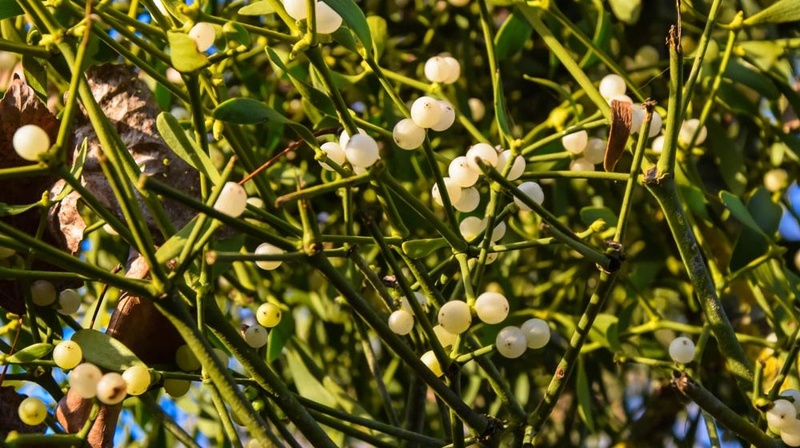
December Lawn and Tree Tasks
December, with its cool temperatures and largely rain-free days, is a great time for Florida gardeners and homeowners to get landscaping projects done. Transplant a tree. Remove mistletoe. Plant winter grass. Don’t forget to water lawn turf and monitor for brown patch fungus!
Florida in December: depending on where you live in this 500-mile-long state, you will experience cold weather (Tallahassee), average-to-cold temps (Orlando), or just mild weather (Miami).
December outdoor landscaping tasks will vary according to your location. For much of the state—central and north Florida—grass has slowed down or virtually stopped growing, and plants and trees are near dormant.
It’s a great time of year to get landscaping projects done—cleaning up beds, creating new beds, clearing undergrowth, tree trimming, mistletoe removal, adding hardscaping, creating pathways, refreshing mulch, fixing sprinklers. The fact that it’s comfortable now to work outside (little danger of heatstroke!) and afternoon rains have stopped means that homeowners can accomplish a lot over the month.
Let’s drill down a bit into December lawn and tree tasks.
Water Your Winter Lawn
Although it’s the dry time of year, it’s also cooler, so lawn turf doesn’t need a lot of water. Once or twice a week is usually enough. Consider watering your lawn before a cold front comes through because the accompanying winds will dry out grass. Apply half an inch or ¾ inch of water (set out a shallow can in the path of a sprinkler, and when it is ½ – ¾ full, turn off your irrigation system).
Seed in Temporary Grass
Ryegrass—that bright green grass with thin blades—is the common choice for temporary winter grass, but you can also plant bentgrass, bluegrass, or fescue. You won’t see much of these grasses in south Florida, but they’re popular in central and north Florida.
Before seeding these grasses, get rid of weeds and dead grass. If you’re planting ryegrass, sow ten pounds of seed per 1,000 square feet of area. (For other grasses, follow directions on the seed bags.)
Watch Out for Brown Patch Fungus
This is the only fungal disease that poses a threat to lawns at this time of year. It usually causes brown circular areas in turfgrass. Manage it with fungicide (available at garden centers and nurseries).
Tree Tasks
Want to move a tree from one location on your property to another? Now is the time. Before moving the tree, first, make sure that the soil is moist and second, know how to form the right size of the root ball. (The root ball is the mass of roots and soil that needs to stay intact to successfully transplant a tree.)
Measure the diameter of the tree trunk six inches above the ground. Create a root ball that’s one foot wide per inch of trunk diameter. If a tree trunk is two inches in diameter (at six inches above ground), the root ball should be two feet wide.
Dig down and then under. Loosen the tree from the ground, wrap burlap or something similar around the root ball, lift it out of the ground, and move the tree to its new location. During this dry season, make sure that the soil around the transplanted tree is kept moist.
We recommend not planting or moving palm trees until spring or summer.
Monitor and Remove Mistletoe
Look for mistletoe clumps in your trees (especially in oaks). Remove it or hire a tree service to remove it. Mistletoe, when ignored, can infest a tree to the point that it kills it. (See our mistletoe blog.)